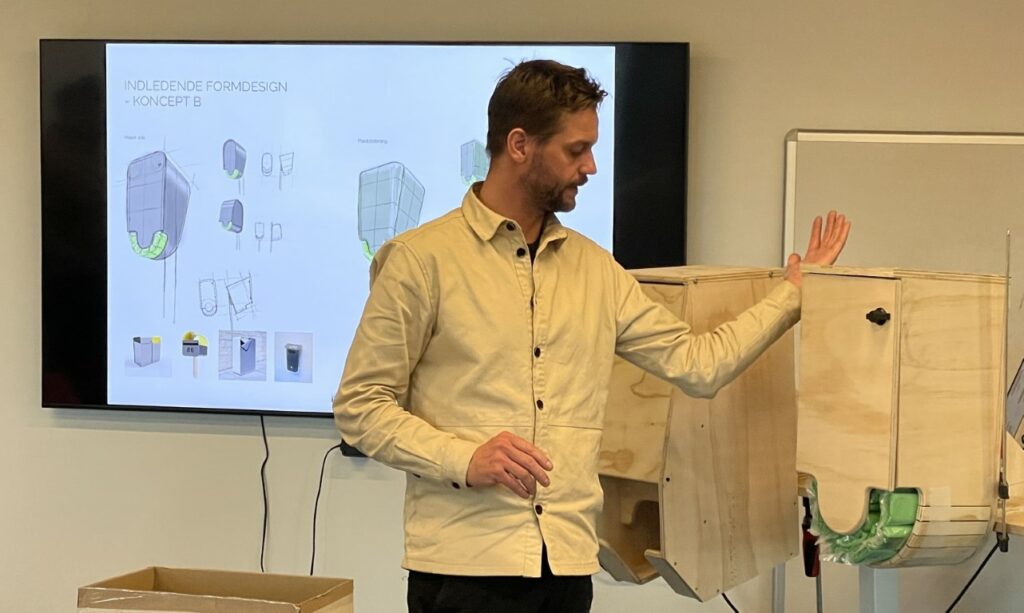Early versions of our inventions often consist of cardboard, cheap wood and 3D printing. Here, you can see some of our products early on – and learn why cardboard mockups make sense.
If you have ever been involved in software development, you know how crucial mockups and MVPs are if you want to speed up the process by rapid iterations. The same methodology is true when we invent physical products – and it might even be more important with hardware than software, as it’s much harder to correct mistakes once the products have launched.
The faster and simpler we can get started with mockups, the better the process. It makes for some fun early examples sometimes – especially when you know the finished product:

Different versions of our bio-dispenser made of wood and cardboard.

A 3D printed version of the remote control for Conhoist with buttons that do nothing.
Simplicity helps the process
Cardboard or some cheap chipboard is easy to work with and lends itself well to a mockup when the product is very function-driven – as in the case of the bio-dispenser.
If it’s close to the body, where the tactile experience is also important, 3D printing is a great tool. Even though the remote control had no functions, the 3D print still gave a good sense of what it would be like to use. This makes it easy to communicate ideas to a future user, who can easily explain if one version is better than the other.
Whether the method is cardboard or 3D printing, mockup is a much faster way to try out different solutions.
